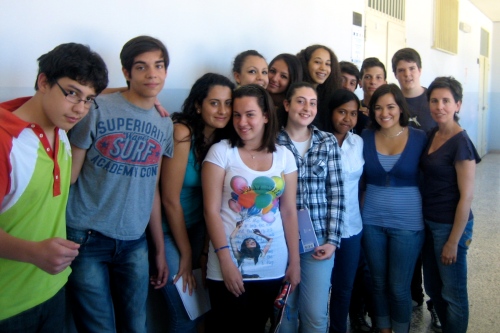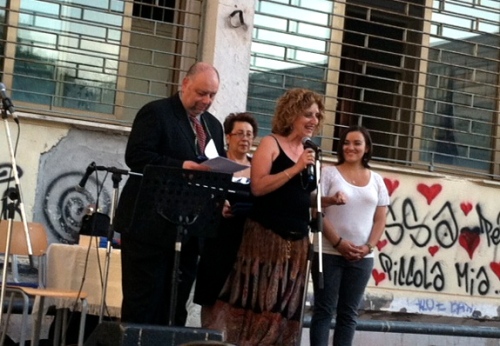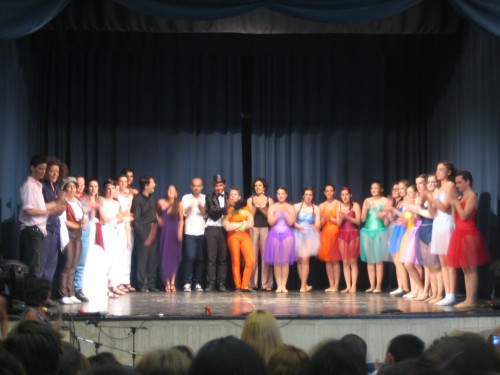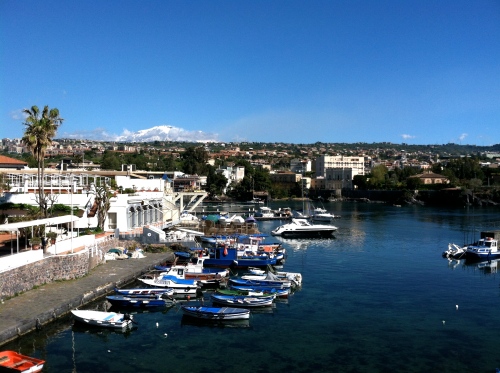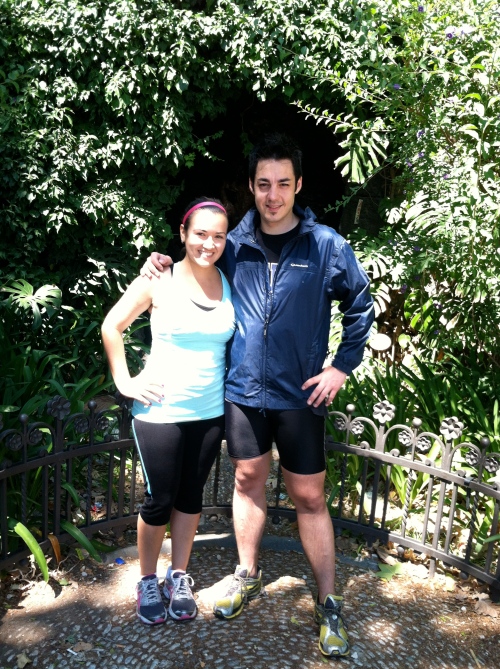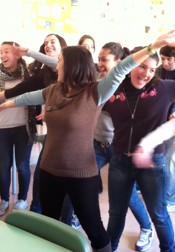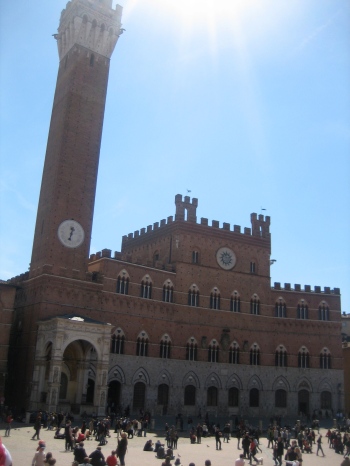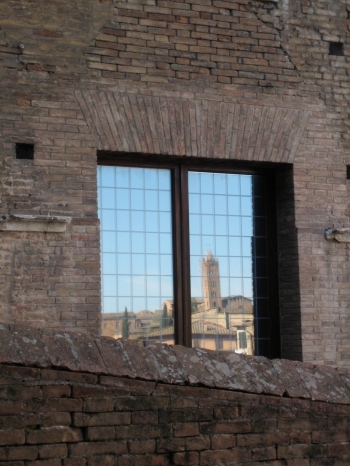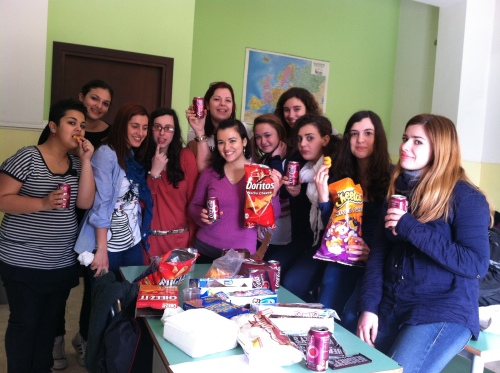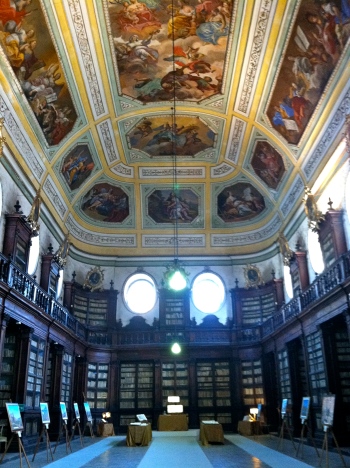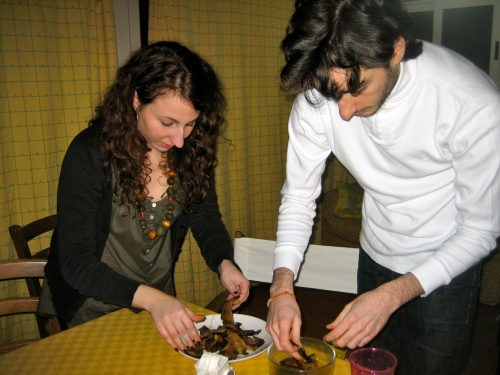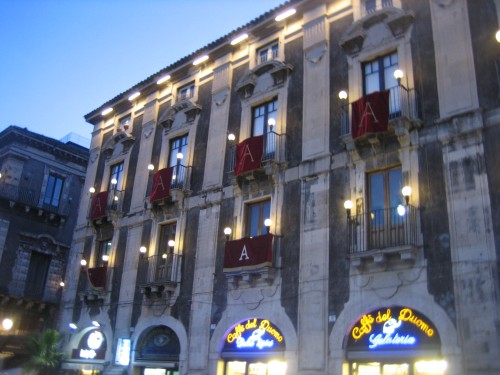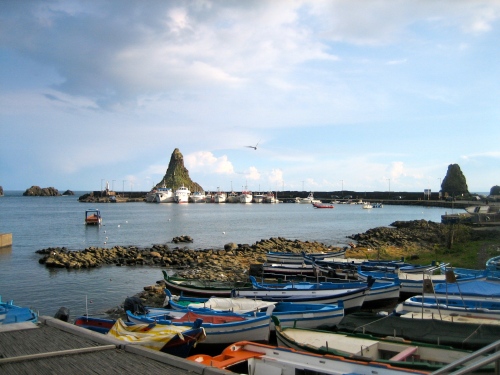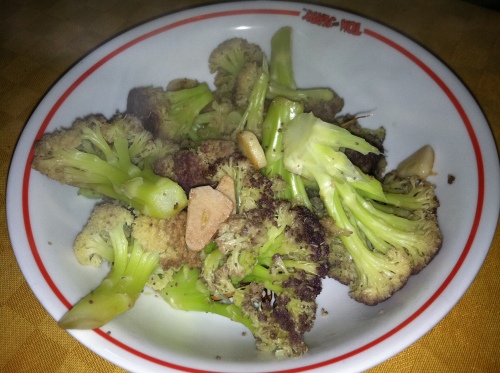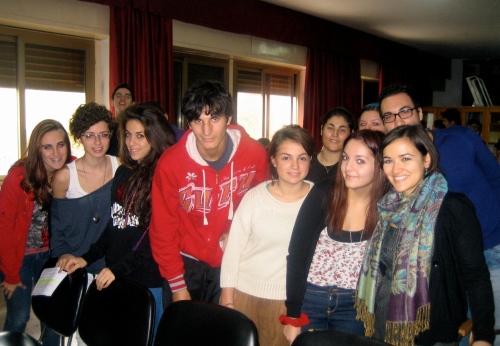School is over, and it was a very bittersweet ending to the year. Along with all of my students, I’m ready for summer and ready to spend my days at the beach rather than in the classroom, but in exchange I’ve had to say goodbye to over 200 students that I will miss more than they know!
Last week was the very emotional week of goodbyes, filled with dinners, parties, and presents.
This class gave me a bracelet made of black lava rock beads, and a Sicilian marionette! The character is Angelica, who is the princess in the Italian epic poems Orlando Innamorato and Orlando Furioso. I was excited about the Angelica puppet both because I took a seminar in college about Italian epic poetry, and because I visited the marionette museum in Palermo in April.
This class gave me a card with their present and wrote: “We hope you’ll remember us forever, and you’ll bring the shadow of our memory among Little Italy’s streets.”
Cue the tears.

“To Gabrielle, in remembrance of a beautiful year together at the Liceo Spedalieri of Catania – the Principal and Colleagues, Catania, June 2012”
At the Liceo Classico, the public school where I taught, they had an awards ceremony for the outstanding students that year, and at the ceremony they presented me with this plaque commemorating our year together. They also made me say something into the microphone in Italian in front of a small crowd of Italian parents and my students who had never heard me speak in Italian before. I was taken by surprise since I didn’t know I was going to speak and only realized it about 5 seconds before the English teacher, Anna, handed me the microphone. I wish I’d had a little more time to prepare myself so that I could have been more eloquent, but I think my students were very entertained by finally hearing me speak in Italian!
Another class gave me a beautiful pair of ceramic tile earrings with hand-painted Sicilian carts on them.
Later in the week, there was a big end-of-the-year performance at the Liceo Linguistico, the private school where I taught. In the early evening, my tap class performed, and I was so proud of them! Unfortunately none of us had tap shoes on (I didn’t want them to buy tap shoes just for our short performance, and my tap shoes are at home in New York!) but the performance went very well and I was excited for my students to perform their dance in front of an audience after working on it for so long.
We did a dance called the Shim Sham, which is a traditional tap dance from the days of Vaudeville. It was choreographed in the 1920s, and soon became known as the “tap dance anthem.” After each performer did their separate act on the Vaudeville stage, everyone would come back out and perform the shim sham together at the end of the night. It was a dance that everyone was expected to know, and still today tap shows almost always close with the shim sham. Now there are several 15-year-old Sicilian dancers who are also experts at dancing the shim sham!
At that school, they brought me up onstage and presented me with a beautiful bouquet of flowers to thank me for the year. They also asked me to say something into the microphone, and I started out in Italian but then got flustered (big crowd! lots of native Italian speakers!) and they told me to speak in English, and Elena translated for the audience. Phew.
Later in the evening, the high schoolers performed A Midsummer Night’s Dream, half in English and half in Italian. The performance was outstanding, and since my parents were still in Catania (they left the following morning) they were able to enjoy it too.

Me with Annalisa, the art history teacher, and a class I worked with in both English and art history
One of my senior classes actually gave me a dress! They gave it to me at school on Friday morning, and Friday night they had their class dinner. Seniors in Italy don’t have any graduation ceremonies – in fact, their big high school exit exams are in late June and July, so they spend the first part of the summer studying like crazy – so each class usually hosts a dinner for their teachers to thank them and to say goodbye. In Italian high schools, teachers change classrooms and not the students, so each class has the same students in it for all 5 years of high school, just like our elementary school classes are the same groups of students, and they become like a family. The final dinner is an opportunity for them to spend one last night together as a class, together with their teachers with whom they’ve spent the past 5 years.
The third year students at the Liceo Linguistico also hosted a final dinner. Most classes only host dinners their last year, but this one is a big class and have been hosting a dinner since their first year. This year it was even more emotional for them because four girls are going to spend the next year studying abroad (in America, Argentina, Austria, and Sweden) so there were some goodbyes to be said there as well. This class gave me two fabulous presents – a pair of earrings and matching bracelet of lava rock beads, which perfectly matched the dress my seniors had given me (which yes, I happened to be wearing), and a big Sicilian flag with all of their signatures!
I feel kind of at a loss when I try to think of a few sentences to sum up my year teaching. It has been such a luxury to enjoy going to work every day, to look forward to seeing my classes and presenting the day’s lesson to them. My students have taught me so much this year, about how to be a better teacher, about Italian and Sicilian culture, and about America and how it’s viewed abroad. Through my experience living in Sicily and struggling to speak Italian everyday, I understand exactly what they grapple with in learning English, and I hope I’ve been able to translate this understanding into compassionate teaching. At the beginning of the year I think I was a little formal with them, since I had to establish a teacher-student relationship before a friendship, and being 5-feet tall and looking like I’m their age doesn’t help with that. But I think I was able to show them my less-formal, silly, relaxed side as well and definitely became friends with many of my students. I do feel like I’ve done a pretty good job of fulfilling the Fulbright mission of cultural exchange and mutual understanding, and I hope I’ve motivated my students to continue studying English and perhaps even study or work in an English-speaking country someday. I will miss them so much!
Some things students wrote to me on cards and on the flag:
“I wanted to thank you for having dedicated your time to always creating interesting discussions! You have a Sicilian spirit. I hope this Sicilian experience will remain forever in your heart!”
“I really admire you for the courage you had to do this experience. I hope you lived it to the fullest and that it will always remain in your heart! You are an example to follow, always cheerful, radiant, and intelligent.”
“Thank you for everything you’ve done during this year of school. I’ve appreciated your personality, your culture, and your presence during the never-ending hours of English. I hope you always remember us when you’re back home. I’ll keep you in my mind!”
“I hope we will be in your heart with Sicily for a looooong time!”
“A goodbye and a kiss from our Sicily. Come back soon.”
“I hope you enjoyed Catania and us 😉 “
“I love you! I hope you will remember me!”
“Can I come visit you in America?”

